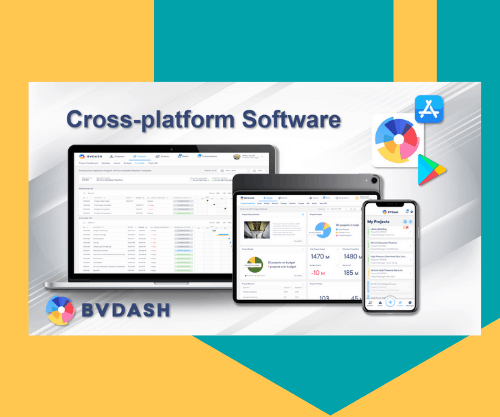Easy Project Dashboards: The Ultimate Guide
How do you get a quick overview of what is happening on your project?
When deadlines seem to be zooming past at a frightening rate, and this is only one of several projects you are juggling at the same time, it can feel like you don’t have a grip on what’s happening on your project.
You are not alone! Many project managers I speak to talk about how hard it is to stay on top of what really matters. Either they are so in the detail about what tasks need to be done, or they have had a period of working on something else and can’t remember where to start on this project.
Dashboards help.
Honestly.
They give you a quick overview of where the project is. You get an at-a-glance view of your project’s world on a page. It’s not going to tell you exactly where the problems are, but at least you’ll get a head start about knowing where to look first.
In this article we’ll look at how you can make the best use of dashboards on your project to track metrics and project health, and help with status reporting.
What is a Project Dashboard?
What is a project dashboard? And do you really need one?
A project dashboard is an on-a-page view of project health. It shows the status of key project metrics so you can easily see how a project is performing.
Dashboards are typically made up of graphs, charts, Red/Amber/Green buttons and other data visualizations that make it easy to see what’s going on.
You might hear them referred to as status dashboards, project health dashboards or project management dashboards. All the terms mean the same thing: a visual summary of project status.
How to use Dashboards for Projects
Dashboards are a useful tool for projects because they bring together information from various sources and put it in one place. You get a holistic overview of project performance without having to dive into various parts of your project management software to see what’s happening.
You use a dashboard by reviewing status at a big picture level. Look at the performance of the key metrics. Are they as you would expect? If not, how are they deviating — are you seeing a positive or negative trend against what you would expect?
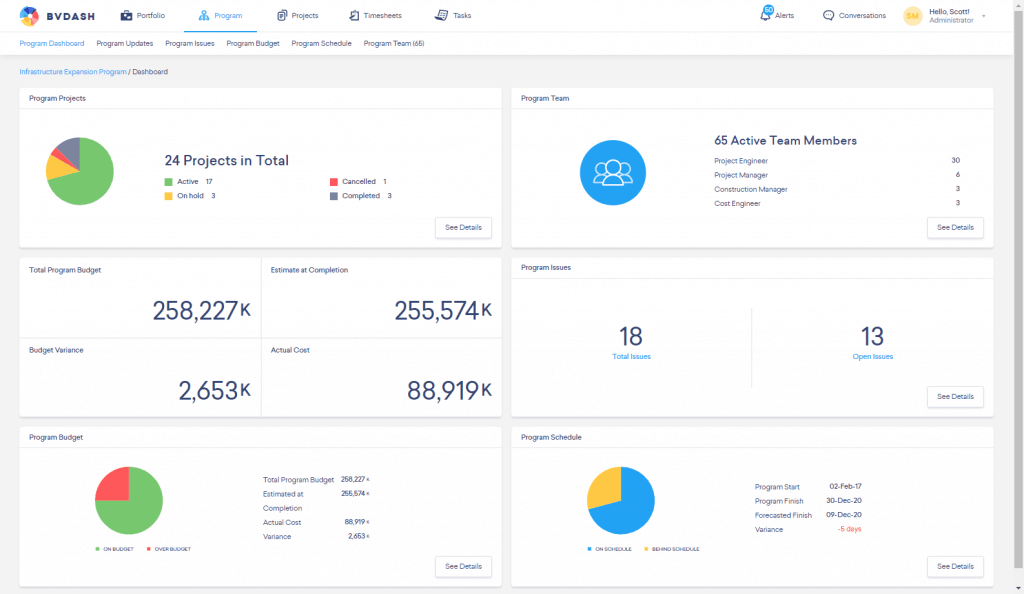
On many dashboard software tools, you can click a metric and dive into the detail to drill down into why the measure isn’t performing as you would expect.
In other words, you start with the dashboard, and drill into the detail from there. Dashboards are a fast way of identifying where a project is going off track so you can spend more time on course correction and less on trying to work out where the problems are.
Tip: Talk to your team about how to use a project dashboard so they understand why the data is being collected and how it is going to help you all manage the project going forward. The more they understand about the project management process for monitoring and controlling — and your dashboard is part of that — the more likely they are to keep the data up to date.
The Key Areas Your Dashboard Must Include
First, I should say that your project management dashboard should include the metrics that make it easier for you to manage the work. There’s no point in creating a dashboard that includes a box about forecasted budget if you don’t have any expenditure on your project because it’s all non-costed internal resource.
However, rather than start with a blank screen, let me give you some examples of the key areas you can expect to see on a dashboard.
Widgets are the blocks on the project status dashboard that show you the data. They pull information from elsewhere in your project management software, so it’s important that you and your team keep the software up to date. Otherwise your dashboard will show you old news.
Issues
There is always something that goes wrong on a project, so having a quick view of what the top issues are is a good thing.
Your dashboard widget can show you open issues and total issues, letting you drill down into the current problems so you can help get them resolved and closed.
You can also configure parts of your dashboard to show risks or changes — or pretty much anything that you capture in the software itself.
Budget
You can track budget by phase. You can show real time budget variance and estimate to complete. Having the budget data so easily available without having to go digging through spreadsheets gives you an early warning mechanism for financial performance.

Schedule
You’ll definitely want to show schedule performance on your dashboard. You can use this to track whether your project is ahead or behind target, so you can make the necessary adjustments.
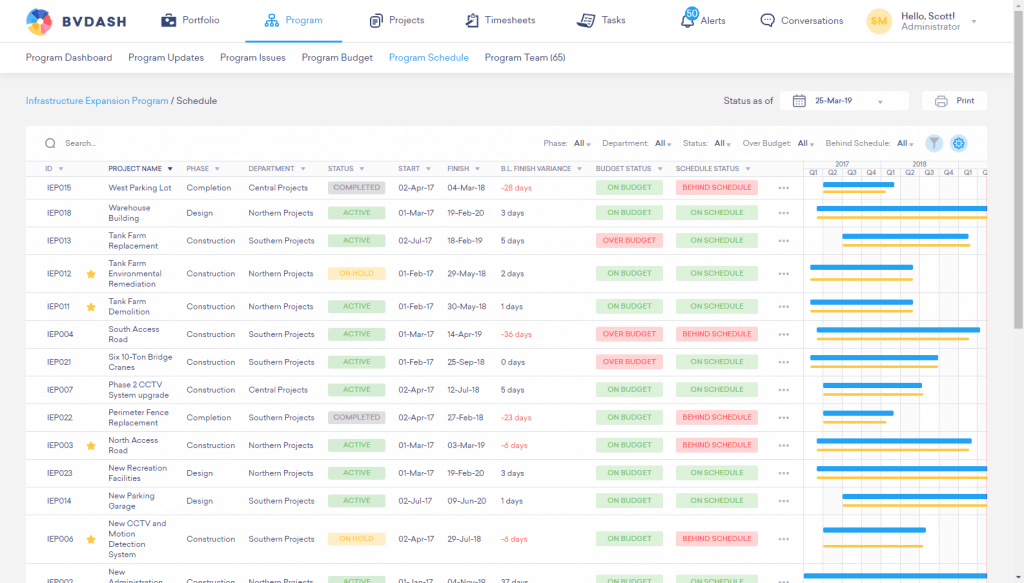
Resources
You can use a block on your dashboard to track workload, billable hours, number of active team members and other things to do with resource.
This can be handy because it gives you a quick view of who is doing what and who might have some availability in the weeks to come.
Quality
Use the dashboard to give you a graph of quality issues per month, or another measure of your choice to help you manage quality.
The great thing about configurable dashboards is that as long as you have the data in your project management tool, you can get it out and into a widget to display on your dashboard.
Further Reading:
- Project Management Metrics, KPIs, and Dashboards: A Guide to Measuring and Monitoring Project Performance 3rd Edition, Harold Kerzner
- Balanced Scorecards and Operational Dashboards with Microsoft Excel 2nd Edition, Ron Person
How to Make a Project Dashboard
You can make a project management dashboard manually in Excel or PowerPoint but I wouldn’t recommend it. I have been down this route and maintaining the data is so time-consuming. Realistically, you aren’t going to maintain a dashboard manually more than once a month, so as soon as you’ve created it, the data is out of date.
Plus, it’s a total waste of your time as you already have the data in a presentable format within the project management tools you already use. Learn how to use your existing software to do the dashboard creation and maintenance for you!
Go into your project software and configure the widgets to show you the measures that are important on this project.
You can have a bespoke dashboard per project depending on what is important for that work. You can start from a template, or an example project dashboard from another project, but don’t feel that all your dashboards have to look and work the same way. Tailor them for how you are running the project.
5 Tips to Make Your Status Dashboard Easy to Use
Whatever data points you include, you want your dashboard to be easy to use. Here are some tips for that.
1. Choose the right tool
As I’ve mentioned, I prefer using a software tool to do the data manipulation and presentation. Choose a product like BVDash that has strong dashboard capabilities. You’ll save so much time if you are using tools designed to present information in a clear and concise way.
2. Make it intuitive
Make it easy to see what you are looking at. Don’t try to squash too many variables into a graph. If necessary, split your measures in two so that you’ve got enough white space on the screen to make it easy on the eye.
The project management status dashboard has to make logical and intuitive sense. If you see a box labelled Budget it should have some financial information inside! You want it to be easy to use and have a low learning curve. Remember, it won’t only be you looking at it — stakeholders and your sponsor need to be able to understand what they are seeing at a glance.
3. Use real time data
If you are pulling information from your underlying software tool, your data will be real time. However, make sure your team know that’s happening and are in the habit of updating the system.
4. Make it shareable
As a project manager, for me the point of a dashboard is to be able to easily spot performance issues on the project and find out what is causing them.
But dashboards are also useful tools for communication. Share the dashboard with your team to help them understand current progress and manage their own work.
Create an executive project management dashboard to share with your sponsor so they can have confidence the project is progressing as it should.
Dashboards improve project communication. Share them and help your team work more effectively together.
5. Customize the content
Finally, customize the content. Out of the box dashboards that can’t be configured are basically no use to anyone. You might not need a widget on portfolio performance but you want two on quality.
When you can tailor the dashboard, you get what you need to manage the work.
Project Dashboard Examples
What should the end result look like? Here are some examples that you can use as project dashboard templates for your own work. Be inspired by these layouts and build something in your tool to give you a similar result.
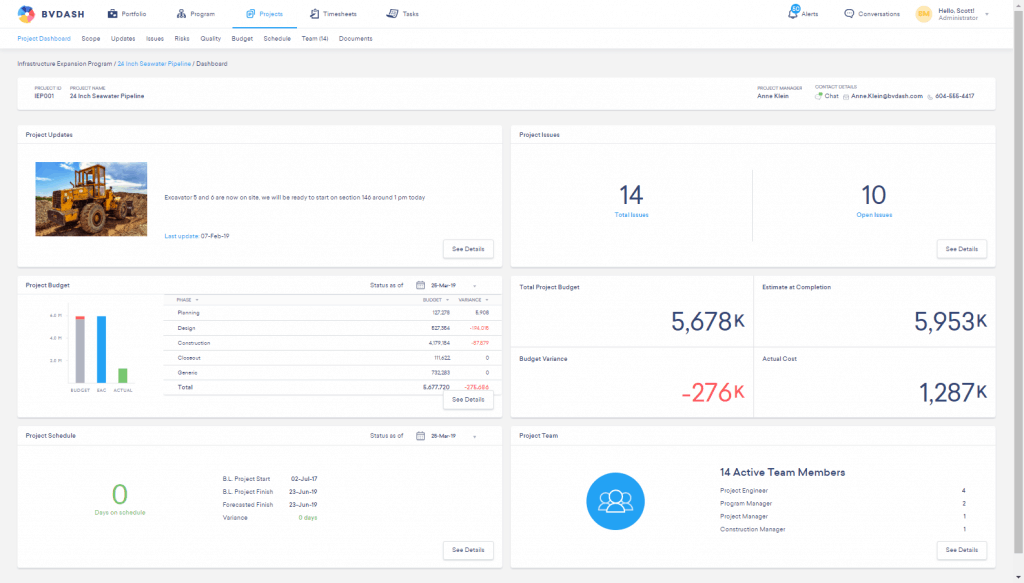
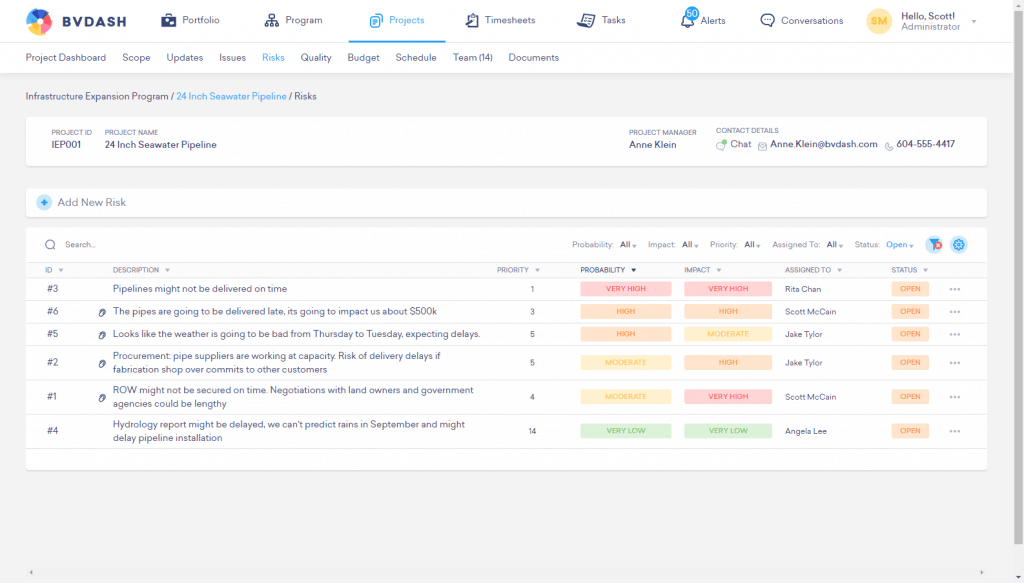
Using Dashboards to Support Project Status Reporting
Have you realized what the dashboard widgets can tell you, beyond helping you manage the project?
All the data points included on a dashboard are things you should be including in project status reporting.
Another benefit of dashboards is that they are a one-stop-shop for pulling the key information for your project reports. Use the information from today’s dashboard to populate your status reports and save yourself a job of having to look up each data point individually.
Project Management Office Dashboards
You can also use dashboards to give you a view of multiple projects at once. A project portfolio dashboard would be a good solution for a PMO, as it can show you the status on multiple projects at the same time.
A PMO dashboard rolls up the status of projects so that you can see a holistic view of what is happening in the business at any given moment. You can tailor the dashboard so it presents what execs are most interested in hearing about.
Takeaways
- Project dashboards provide an at-a-glance view of what is happening on a project.
- Use software like BVDash to give you real time information about the project.
- Tailor your dashboard by choosing to display the metrics that give you data useful for your project and how you manage it.
- The easier they are to create and use, the more valuable they are as communication tools for you and the team.
BVDash is project management software that can be used by any project team to deliver results. A user-friendly solution that can be customized based on your needs, it includes powerful dashboards to give you a birds-eye view of your projects in real time.

